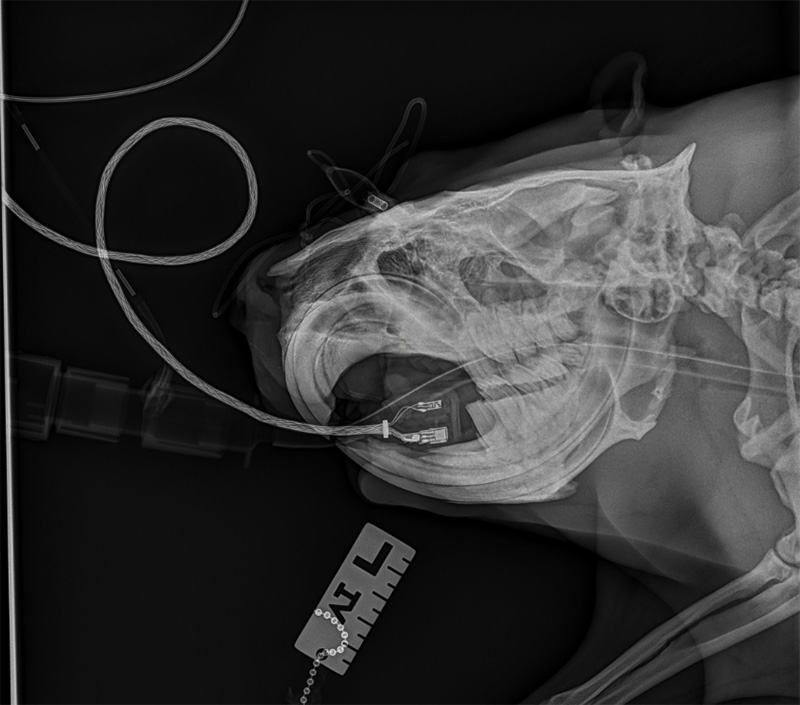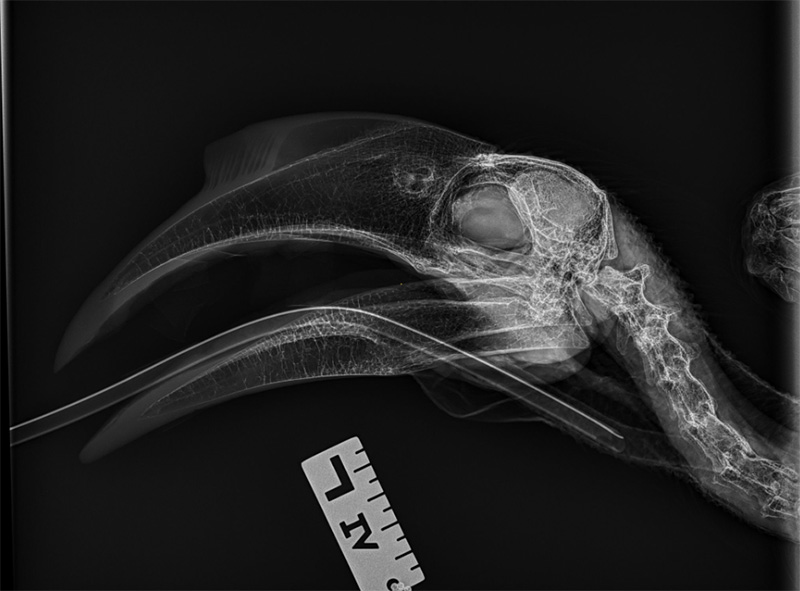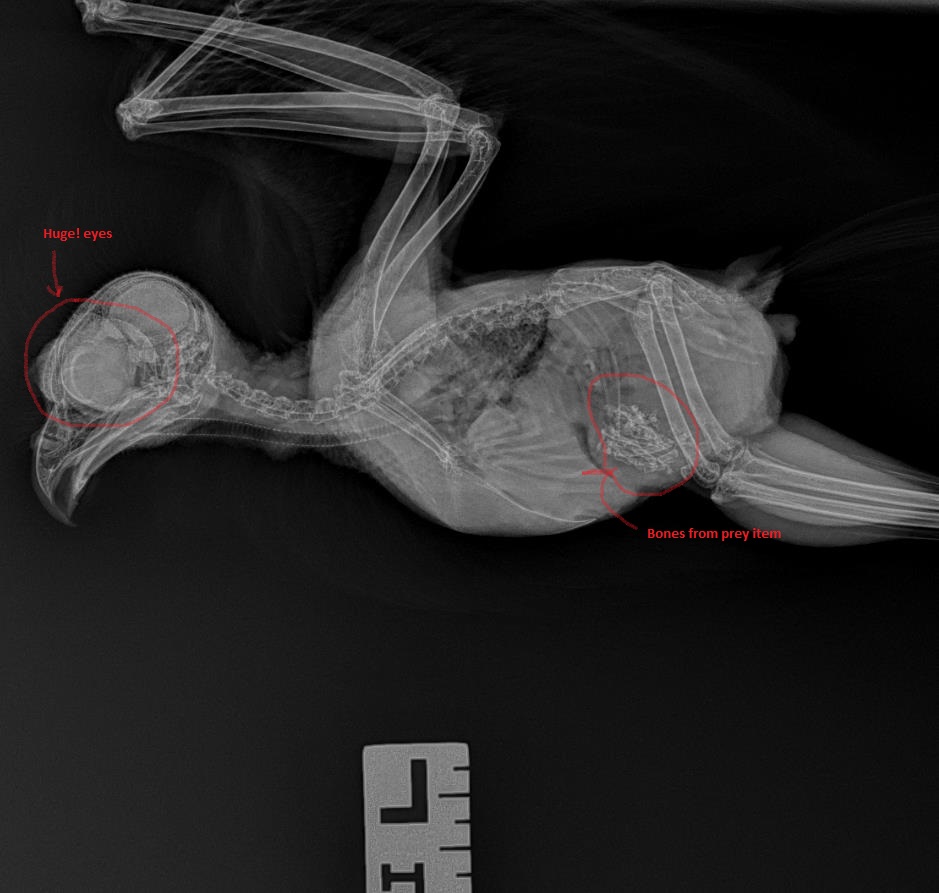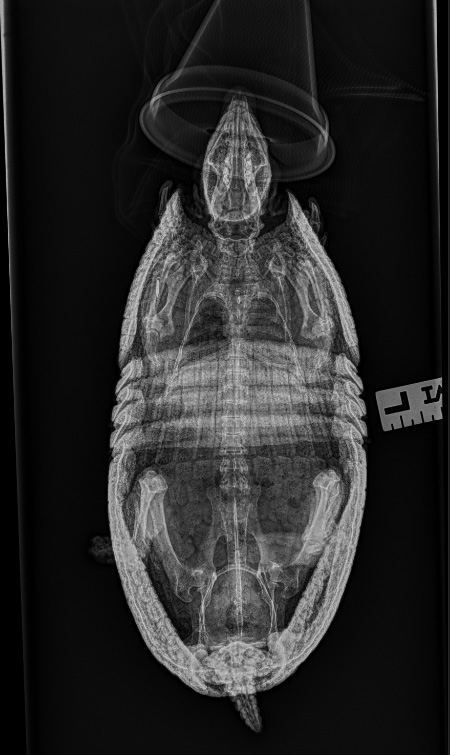Black cats, pumpkins, ghosts… skulls and skeletons. They’re all symbols of the Halloween season. We asked Point Defiance Zoo & Aquarium’s veterinarians, Dr. Karen Wolf and Dr. Kadie Anderson, to give us an “inside” look at a few of the Zoo’s animals and their not-so-spooky skeletons. The veterinarians regularly take radiographs or X-rays of the animals to check on their health and care for them.
Walnut the Beaver
In this X-ray, you can see Walnut the beaver’s long incisor teeth. A beaver’s incisors grow continuously throughout its life and are worn down through daily use. These teeth are also self-sharpening.

Scooter the Armadillo
In this radiograph, you can see Scooter the armadillo’s armored skin. In the wild, this armor protects armadillos from predators.
Pilai the Hornbill
In this picture, you can see Pilai the hornbill showing off her impressively large beak. Hornbills use their bills to snatch prey.

Pebbles the Burrowing Owl
Despite being very small (weighing less than 10 ounces!), burrowing owls are fierce predators. In this radiograph, you can see the bones of a prey item in Pebbles’ stomach. You can also see his characteristically large eyes that take up the majority of his skull!

Scarlet the Rainbow Boa
In this picture, you can see all of the delicate vertebrae and rib characteristics of snakes. You can also see the boa’s many sharp teeth angled backward, helping the snake keep its prey headed in the direction of its stomach.

